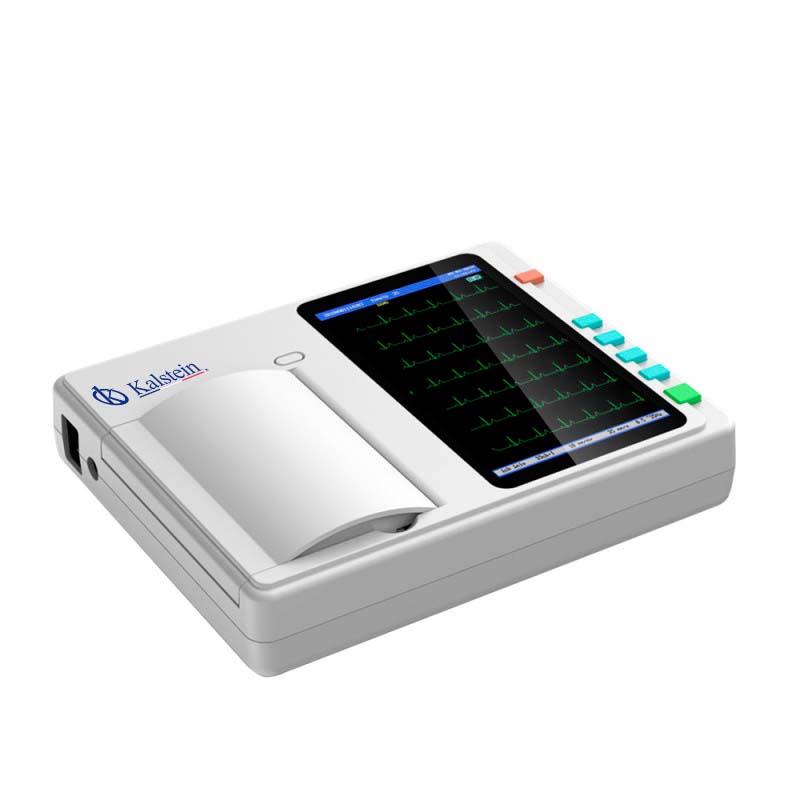Medical technology has advanced significantly in recent decades, and the Digital ECG Electrocardiograph stands out as one of the most innovative tools in cardiac diagnosis. This device, essential in the evaluation and monitoring of heart health, has evolved to offer greater accuracy, ease of use, and improved clinical outcomes.
In this article, we will explore the benefits, unique features, and how the Digital ECG solves specific problems in the medical field.
We understand that you need equipment that delivers maximum value to your laboratory. We invite you to visit https://kalstein.de/category-product/medical-line/ecg-digital-electrocardiograph/, to immerse yourself in our universe of cutting-edge technology equipment. Our prices are competitive and accessible, we combine the convenience of online shopping with the guarantee of an exceptional product. Because you deserve the best, we create and offer top-tier laboratory equipment. Make your choice today, where science comes to life. https://kalstein.de/
Benefits of the Digital ECG Electrocardiograph
The Digital ECG Electrocardiograph offers numerous benefits that make it an indispensable tool in any medical facility. One of the main benefits is its ability to provide accurate and rapid readings of the heart’s electrical activity. This is crucial for the early detection of cardiac abnormalities, allowing doctors to intervene quickly and improve clinical outcomes.
Another significant benefit is the ease of use of the Digital ECG. Unlike older models, these devices are designed with intuitive interfaces and clear displays that make data interpretation easier. Additionally, many digital electrocardiographs are equipped with data storage and transmission capabilities, allowing healthcare professionals to easily share information with colleagues and specialists for better decision-making.
Unique Features of the Digital ECG Electrocardiograph
The Digital ECG Electrocardiograph stands out for several unique features that set it apart from other medical devices. One of these features is the ability to integrate with medical data management systems. This not only facilitates the storage and analysis of patient data but also improves operational efficiency in healthcare settings.
Another highlighted feature is the advanced filtering technology that minimizes interference and noise in ECG readings. This ensures that the data obtained is as accurate as possible, reducing the possibility of diagnostic errors. Additionally, many Digital ECG models include customizable configuration options, allowing users to adjust parameters according to the specific needs of each patient.
Medical Innovation in ECG-Digital Design
Medical innovation is a fundamental pillar in the development of the Digital ECG Electrocardiograph. These devices incorporate the latest technologies to improve the accuracy and reliability of ECG readings. For example, some models use artificial intelligence to analyze data in real-time and provide automatic alerts about potential cardiac issues. This not only enhances patient safety but also allows doctors to focus on other critical tasks.
Furthermore, the portability of the Digital ECG is a significant innovation. Modern devices are compact and lightweight, making them ideal for use in various settings, including emergencies, outpatient consultations, and remote monitoring. This flexibility is especially valuable in situations where time is crucial, and quick access to accurate diagnoses can make the difference between life and death.
Laboratory Research and Its Impact on ECG-Digital Development
Laboratory research has played a crucial role in the evolution of the Digital ECG Electrocardiograph. Through extensive studies and rigorous testing, researchers have been able to identify and address the limitations of previous models, thus developing more advanced and reliable devices. This ongoing research has enabled the implementation of new technologies, such as more sensitive sensors and more sophisticated analysis algorithms.
Additionally, collaboration between academic institutions and medical device manufacturers has accelerated the innovation process. Clinical studies and field tests have provided valuable data that has been used to continuously improve the design and functionality of the Digital ECG. This ensures that the devices not only meet current healthcare standards but are also prepared for future challenges and advancements in medicine.
Solving Specific Problems: Diagnostic Accuracy
One of the main advantages of the Digital ECG Electrocardiograph is its ability to solve specific problems related to diagnostic accuracy. In the past, misdiagnoses due to inaccurate ECG readings were a constant concern. With the introduction of advanced digital technologies, doctors can now rely on more exact and consistent data.
The improved accuracy of the Digital ECG also allows for the early detection of critical cardiac conditions, such as arrhythmias and myocardial infarctions. This not only improves survival rates but also reduces the need for invasive and costly procedures. By providing a reliable tool for diagnosis, the Digital ECG contributes to better patient health management and greater efficiency in healthcare delivery.
The Future of the Digital ECG Electrocardiograph
The Digital ECG Electrocardiograph represents a significant advancement in medical technology, offering tangible benefits for patients and healthcare professionals. With unique features such as system integration, advanced filtering technology, and artificial intelligence capabilities, these devices are well-positioned to lead the future of cardiac diagnosis.
As laboratory research continues to drive innovation in this field, we can expect to see even more improvements in the accuracy and functionality of digital electrocardiographs. This will not only enhance the quality of healthcare but also enable doctors to diagnose and treat cardiac conditions more effectively and quickly. In summary, the Digital ECG is an essential tool that will continue to play a crucial role in modern medicine and laboratory research.

